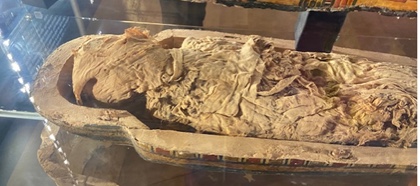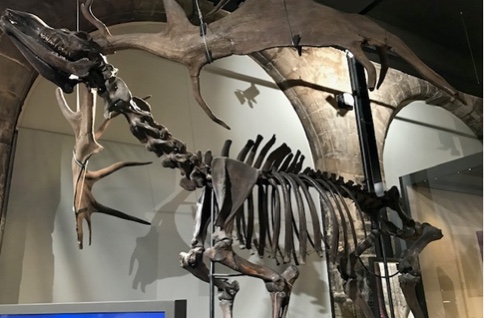The Beauty of Decay

Death Priestess Kirsty shares some fascinating insights on the process of decay and shines a light on the beauty she sees within.
The word “decay” paints particular pictures in our mind; rotting flesh, death and horrible smells. We have been conditioned to see death and decay as an enemy, something that should be feared. This is a topic that fascinates me and looking at it from the perspective of our beautiful Dark Mother unlocks the beauty and mystery of this beautiful part of the life cycle in our world. As a forensically trained Death Priestess, it is a subject that I have researched and taken the time to understand it from multiple perspectives. It is not what we think it is, it is so much more.
How do you come to find this area fascinating? This is a question I could hear all of you asking as you read the above paragraph. Long before becoming a Priestess, I had this notion of becoming the next Detective Inspector on Death in Paradise -sun, sand, solving crimes and the odd rum or two, what is not to love? Alas, this was not meant to be, but I did discover over those three years of studying Forensic Science how important the cycle of death and decay was – not only for solving crimes, but for looking at how a person or animal died and giving them their last chance to speak from what was presented to me. Giving them their voice back, giving them their names back.
Cerridwen of Earth at the time of Mabon, our Autumn Equinox. When the leaves dance and swirl in the air, when the trees let go of what no longer serves them, when their shades of green transform to shades of orange and gold. Nature’s alchemy. When the leaves have danced and landed in their final resting place, what happens next? This is where Cerridwen brings in a nature based “clean-up crew” to complete Her cycle of life and death. We thank Cerridwen for the life on this Earth and the magick of Her plants and herbs, but we don’t think about a group that is not a plant, nor an animal – it is the world of fungi.
At this time of the year as we walk through woodland, past the beautiful silver birches, listening to the rustling of the Alder and admiring the scarlet red berries of the Rowan, look down at the ground, look at the bases of these trees and this is where you will find the world of fungi. On my walks I have noticed the tiny Inkcaps coming up through the grass and at the bases of trees that have died. Certain species of fungi should be handled with care as they are highly poisonous and can contribute to deadly diseases. Do not harvest or pick any fungi without consulting a professional in this area.
Fungi have adaptations called mycelium. These are groups of roots from the fungi. Each of these roots is called hyphae and they extend and grow to find a food source, in particular something that is in the process of decay, such as plants, trees or animals. Sometimes fungi can have a little trick up their sleeves called spores. Spores have been the subject of Hollywood nightmares and inspiration for years. They have also been found to be the “curse of Tutankhamun”. Spores of Aspergillus niger built up inside his tomb for thousands of years in the paint used to decorate his tomb. Breaking the seal allowed the spores to be inhaled and contributed to the death of Lord Carnarvon and many of Howard Carter’s team back in the 1920s. Spores are how fungi spread and they can form mushrooms, depending on the species.
As the leaves start to fall, keep an eye out for Cerridwen’s fungi. As well as their part in the process of decay, they are amazing to admire and I certainly appreciate them for the hard work they do year after year. They are one of the reasons that life is able to go through a cycle and provide nutrients and minerals for the next generation. They are the reason that we are not surrounded by dead matter all around us. Next time you see one of these magnificent creatures, stop and say thank you to them for the hard work that they do.
Fungi play a huge role in death as well as in life, they in themselves complete the cycle. Currently there are so many investigations into their healing properties. Certain species of them such as Turkey-Tail Mushroom are undergoing investigation for cancer treatment. They are a whole new world that we do not understand completely and have their own form of magic, from decay to cure to connecting with the land of the fae.
So what happens during this magical process of decay? To start, life comes to an end, whether this is plant or animal. As the soul and essence leaves the physical form the body switches off. Where there was once light, there is now darkness. The blood stops flowing, cells switch off and the body becomes silent. The body now begins to break down by using the acids present from organ breakdown. There are five stages: fresh, bloat, active decay, advanced decay and skeletonization. Plants and trees are different. Fungi release an enzyme(essentially pairs of scissors) that break down the cells inside the tree and the fungi absorb it through the mycelium (like drinking a milkshake). The tree or plant will seem to disappear, but it is now back within the ecosystem, its energy flowing within the current generation, still guarding and watching for all time.

When bodies go through the five stages it can vary as to the time that they take place. The hot, humid and splendid weather we are having in Avalon will speed the process, cold weather will slow it down. The Egyptians used the hot sand as an early form of mummification to try and stop the decay process. Eventually the process of mummification became more sophisticated, and the decay process was stopped using natron, organ removal and certain resins and herbs. The Egyptians removed the organs for religious purposes; it is unclear how much they knew about the organs’ part in the decay process. Another kind of creature that plays a part in decay are insects. They are sometimes not the most popular creatures on the planet, but like fungi, they are part of the clean-up crew for Cerridwen. They are part of the key for her transformation of life to death and rebirth.
The sort of insects you will see first are maggots. These are the young flies that start to break down the tissue. Eventually they will turn into flies, such as the bluebottle. How can you tell one maggot to the next? There are two ways; you can wait patiently and rear them from maggot to pupae to fly or you can look at their spiracles(breathing holes). This will mean you are looking at a maggot’s bum for ages (voice of experience).Other insects will include different beetles, such as the coffin beetle. They come during the final stages.
 After the tissue is long gone, we are left with what I consider the truly creative part of the body; the skeleton. The curves and beautiful organic shapes of the bones, the texture of the little pits on the joints, the uniqueness of the whole skeleton system. This is what excites me about bones and what really captured me when I studied Forensics. Forensic Anthropology is the study of bones and looking at how someone left this life just by looking at their skeleton. I had the privilege of examining Anglo Saxon skeletons and giving them their voice back. Some people treat skeletons as objects, but I saw them and continue to see them as people. They must be treated and handled with respect during this process. Taking the time and care and also speaking to them, letting them know that I was there to support them. They were able to speak. They spoke to me, I knew their biological gender, I knew their approximate age, I saw if they were ill in life, had injuries and their quality of life. All of this and more can be found, bones do tell stories, you just need to listen.
After the tissue is long gone, we are left with what I consider the truly creative part of the body; the skeleton. The curves and beautiful organic shapes of the bones, the texture of the little pits on the joints, the uniqueness of the whole skeleton system. This is what excites me about bones and what really captured me when I studied Forensics. Forensic Anthropology is the study of bones and looking at how someone left this life just by looking at their skeleton. I had the privilege of examining Anglo Saxon skeletons and giving them their voice back. Some people treat skeletons as objects, but I saw them and continue to see them as people. They must be treated and handled with respect during this process. Taking the time and care and also speaking to them, letting them know that I was there to support them. They were able to speak. They spoke to me, I knew their biological gender, I knew their approximate age, I saw if they were ill in life, had injuries and their quality of life. All of this and more can be found, bones do tell stories, you just need to listen.
Writing this article about decay brought me back to my roots, my mycelium if you will and got me thinking about Cerridwen and Her role in decomposition and decay. She brings life, but life does not last forever. Life is full of creativity, process and transformation, but with all of this a balance must be restored and this is where the transformation, process and creativity of decay and decomposition comes forward.
With decay in mind, according to the mythology, there are three cauldrons. One in particular captured the sight of King Arthur. The mythology tells us that this cauldron has the power of rebirth, to bring the dead back to life. The condition is that the person would never be able to speak about the process once they have emerged from the cauldron of rebirth. A thought for you- is this a form of reversed decay and decomposition? Would the same processes have happened inside the cauldron? Is this secret in sight all around us in Cerridwen’s woodland? Do creatures such as insects and fungi hold the key to Cerridwen’s secret? The secret of transformation from life to death to rebirth.
Blessed Be
Kirsty
Somerset, UK

Kirsty is a Death Priestess of Avalon, Priestess of Anubis and is currently on Spiral one of the Priestess of Cerridwen training. She is a Wiccan and Witch with a passion for divination, ancestral work and research of ancient practices. A qualified teacher, Kirsty is developing learning practices to help others who are interested in the Pagan Pathway.
Photograph of Inkcap from https://www.woodlandtrust.org.uk/trees-woods-and-wildlife/fungi-and-lichens/common-inkcap/
Other photographs taken by Priestess Kirsty Reade. Photographs are from the Witchcraft Museum, Boscastle(mushroom), The Leicestershire Museum (mummy of the dancer) and Warwickshire Museum (Oisin the Irish Deer skeleton).